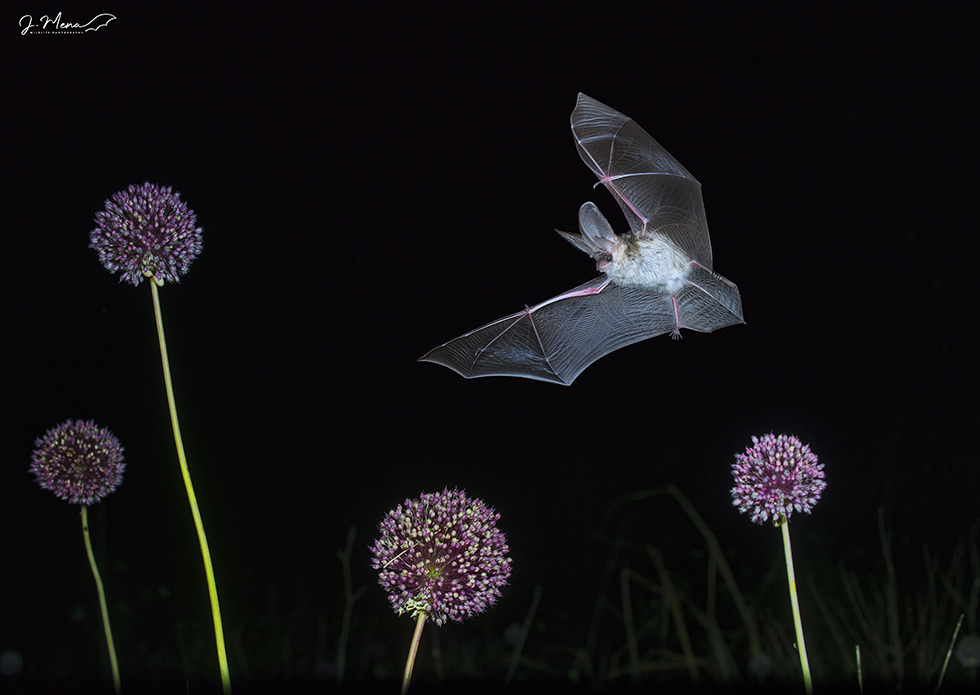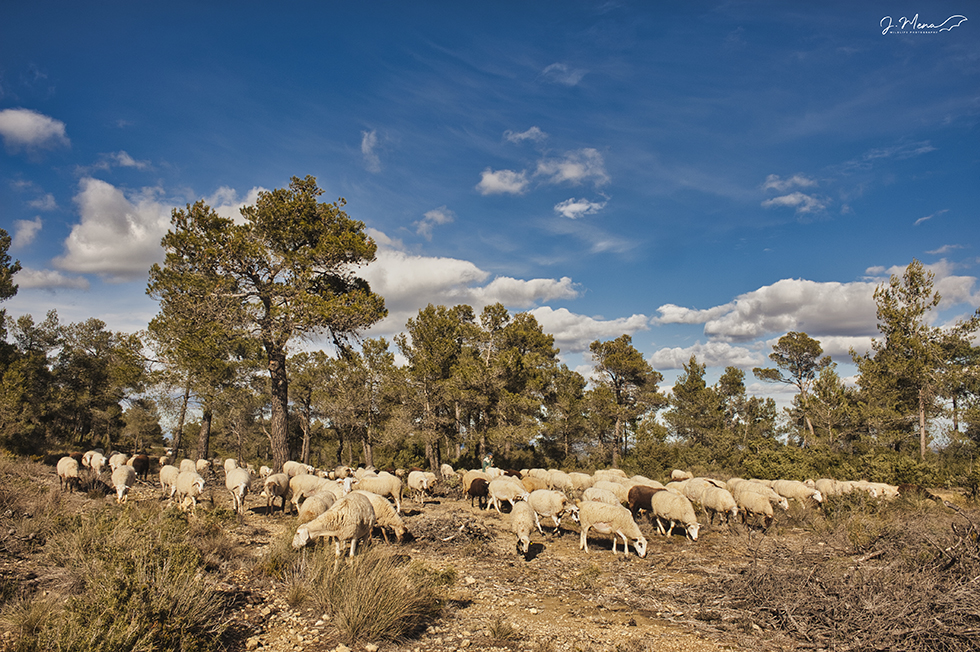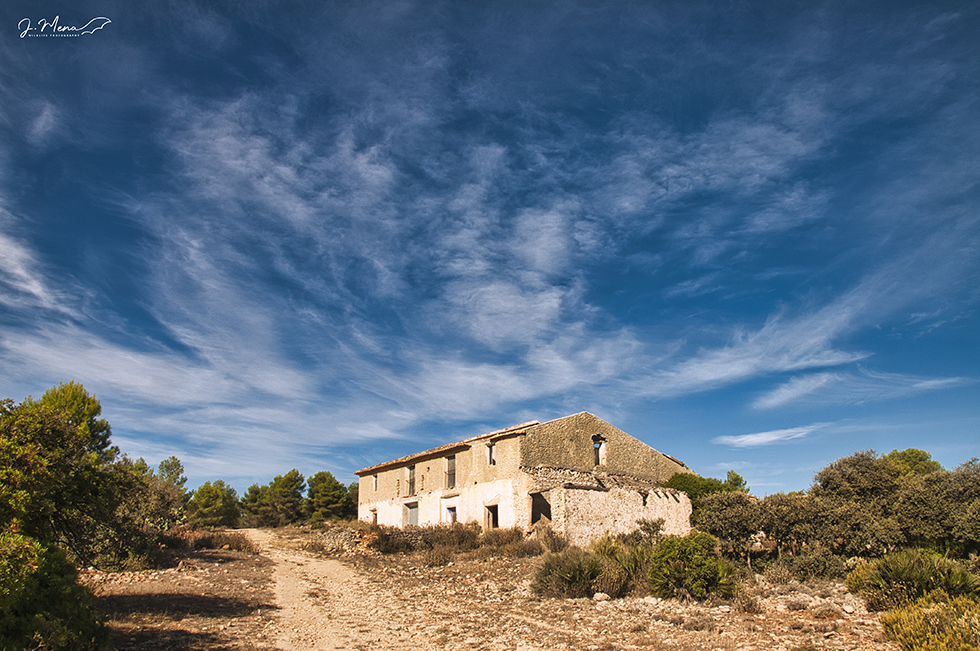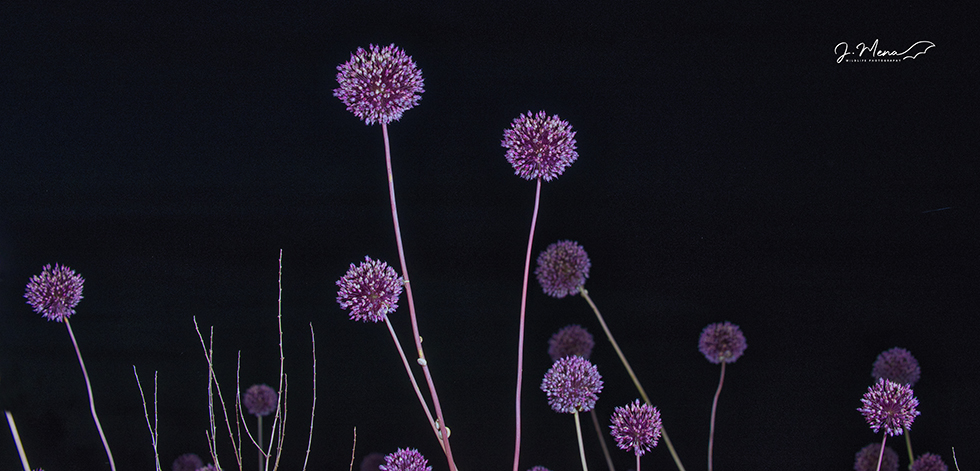The long-eared and the garlic

During the last weeks I have returned to a place that brings back intense and nostalgic memories of a wonderful time, in which I accompanied the shepherds of this mountain range for many days to document their last adventures, specifically in the ravines of El Gatillo and de la Carrasca in the Sierra de Enguera, very close to the hamlet that in its day was a Muslim farmhouse, Casas de Benali. The leafy and large forests of these last foothills of the Iberian and Betic system are often broken by rocky outcrops, shelters boxed in in the upper areas of tortuous straits and inaccessible ravines, all these elements form images of great beauty.

Following the route through the high ground, I arrive at the Ceja del Barranco del Gatillo where I come across the Corrales house-inn, located in the Cañada Negra, very close to its intersection with the Vereda Real or Cañada de Almansa, also known here as Cañada Real de Enguera, an important transit route for transhumant shepherds who, coming from the provinces of Cuenca and Teruel, fled the harsh winter climate to seek more benign areas to spend the winter. Conversely, these paths were also used by cattle and mule, donkey and horse ropes from the cereal-growing plains of Campo de Albacete on their journeys in search of winter pastures.

This completely abandoned farmhouse in the middle of the forest is now a refuge for a highly varied fauna that takes advantage of any crack in its old walls to hide and reproduce. Inside, I was able to locate some individuals of the long-eared bat (Plecotus austriacus), an agile night hunter that feeds mainly on flying insects, which it captures near the vegetation very close to the ground. In successive visits that I made to the place to control them, I checked their exits and entrances through a window of the house, also noticing how they flew over some grasslands next to the path, full of leek garlic (Allium ampeloprasum L.), a perennial herb, geophyte, with bulb. , with a simple unbranched stem with a circular section and that can reach more than a meter in length, and that above all attract attention for their group of flowers in the upper part that form a sphere of approximately 7 cm in diameter, of colors that They range from pink or white, going through the entire range of purples or purples.

This chromaticism and the shapes of this peculiar species of plant from the Amaryllidaceae family sparked an idea in my head that I had to put into practice, to be able to photograph these little devils, the bats, moving among the purple spheres. But how to do it? Trying it in the middle of that field full of weeds, was little short of an impossible mission. After thinking about it, in the end I decided to take part of the stage to the window of the house where the bats came out, for which I got a cork base about 5 cm thick on which I spatially distributed a few garlic leeks with their corresponding spheres, leaving a hole in the upper right part through which our protagonist supposedly had to pass, placing the entire structure in the interior part of the house forming a 90º angle with respect to the window.

The margin of error photographically speaking was very small, considering that he had to deal with only a few individuals each night, and the chances of the bat getting in well were very small. Luckily, it only took me two sessions to achieve the image that had formed in my head a few weeks before.

